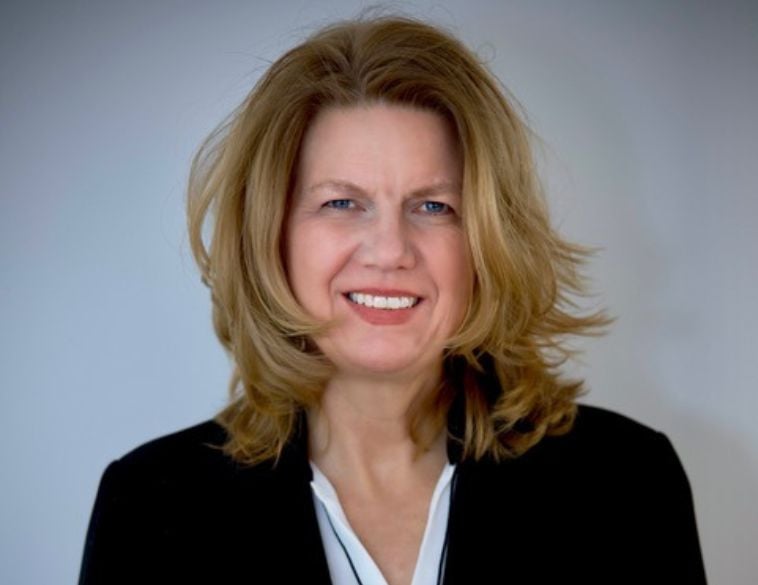ASE Certification acknowledges a technician as one of the best.
We talked to Trish Serretorre, Senior Vice President Communications, ASE (Automotive Service Excellence) and Mike Coley, ASE Education Foundation President, about the history and future of this critical industry organization. ASE is celebrating their 50th Anniversary and has a lot planned for this year.
“Because of our 50th anniversary we’re excited to look back, but more importantly, to look forward and what we’re going to be doing.
“ASE has done a lot of good things, but here are a couple key points. We started testing in ‘72, with just four tests in the automobile series. Now we have over 54 tests in 12 different series, and we test everybody except the ring and the motorcycle techs. We have truck and transits, and parts specialists for counter people and service consultants. We have the whole spectrum of everyone who was involved in automotive service and repair from buying the parts to installing the parts. Talking to the customer, and building those relationships is the ultimate goal of what ASE has been always about—providing an opportunity for consumers to understand who’s fixing their car, plus the qualifications and the knowledge and the skills those individuals have—because they’re ASE certified! It hasn’t really changed in 50 years, but how we do it has changed a little.
“Up until 2011, our tests were offered via paper and pencil. Then in 2011, we introduced the opportunity to take the ASE tests on a computer-based platform at a test centre. That was a big change but one that was essential, and we’re pleased we could do that. In 2019, we took the next step and now offer our automobile recertification tests on a mobile app! You can take the ASE automobile recertification tests through a subscription-based platform on your phone!
“Technology has certainly made all our lives easier. Our goal is to make it easier for service professionals to get and maintain their ASE credentials, whether they’re in Canada, the U.S., wherever. We have ASE test centres in Canada and there are many ASE certified techs across Canada. Going forward, we’re looking at introducing a certification assessment for folks doing advanced drivability service work.
“High Voltage vehicles (EVs)—that’s a huge issue! We are undertaking that and we’ll be looking at having some sort of credentials for those who work on those vehicles, probably within the year. We are continuing to streamline the process to make it easier for technicians to register. We test pretty much year-round so there’s no excuse not to be able to test you. And from a recognition standpoint we’re going to be spotlighting ASE certified professionals. We want to help get their recognition out there and help car owners and our industry understand that without those folks, we pretty much grind to a halt.
“Every year ASE has the automotive Service Professionals’ Awards program. One of the gentlemen this year—Jordan Trent—a first group winner, is a Canadian school bus fleet technician.”
The ASE Education Foundation
Mike Coley heads up the Educational Foundation and he tells us about the efforts going on there. They are far-reaching and should have and can have a huge impact on the technician shortage.
“I guess somewhat similar to the technician certification, what we do in the Education Foundation is accredit high school and college training programs for auto, truck and collision repair. But right now this is just in the U.S. I think we had one program in British Columbia contact us last year, but I don’t know if they followed through, but the training programs, like provincial licensure, are all defined. A big committee gets together with the approval of the government says here’s what our standards are, here’s what we’re going to teach. The value and accreditation is a process of continuous improvements. The standards continue to evolve and what they really outline is if you’re going to teach someone how to repair automobiles, here are all the things you need to teach. And we go into great detail—you need to teach them A, B, C, D, E, F, and G. and you need these tools to teach it. The instructors need these credentials and need this much of a training.
“Those standards are continually evolving and we get those standards from our industry partners—manufacturers in the aftermarket. Students that are entry level need to know how to do X, Y, and Z and we say well, let’s break that down into a teachable tasks that we can then give to the schools and say you need to teach X, Y and Z. That allows the schools to have that continuous feedback loop of the industry as the industry’s needs change. Now I know I’m teaching to the latest standards. One of the requirements we have is every school needs to have a Advisory Committee, made up of local business owners. And those people that are advising the program, make sure that you’re teaching to the national standard, but make sure that you add extra focus in local needs. Those local employers really helped give the programs the local emphasis they needed. And then those obviously are the employers who are going to be hiring students coming out of those programs. We found that schools struggle with making that connection to those local businesses. As a local business, they may or may not know there’s a training program in town. And they may or may not know that having business involvement is important to that program. You can work with the local school, ‘grow my own hire’ entry level technicians which will grow up in my business, teach them the things I want them to do procedurally and culturally—how do we work in this shop? How do we work together? How do we respect each other how do we respect our tools and equipment, our customers and their vehicles, etc.
Get involved with a local school
“Get those employers to recognize there’s a source here where I can ‘grow my own’. Just get involved with a local school. .. and to help bridge that gap and create those relationships, we just developed an adopter School toolkit that allows employers interested in that grow your own approach, to identify where the local schools are, plus a whole list of different activities and details plus suggest you give a talk at a career day. Having all those resources available to businesses to connect and support their local schools and help that next generation of students become our next generation of technicians is important.
“Remember, we’re not just competing with other auto repair businesses for the talent of the future, we’re competing with a lot of other industries who want skilled labour. We need to get those students excited about the opportunities in our industry. It’s here to stay—cars are not going to magically self-heal anytime. These are great careers for people with that technical aptitude and that sort of problem-solving mentality, enjoy getting ‘hands-on’, get satisfaction out of it. We’re just trying to prime the pump to get a lot more students interested in the career and get through school and the industry.
“If automotive is something that’s interesting to you. You can get into it and in most cases, you can work while you’re going to school and come out of school with a great degree, a great skill set… be making good money while everybody else you went to high school with is still in college, piling up debt. It’s a wonderful opportunity and we need to get that word out to a lot more people.
“Even for those students that maybe find out turning wrenches is not really their calling, a good technical automotive education can be a springboard to maybe what they really enjoy—organizing parts inventory, running a parts department, owning/managing a jobber shop, maybe fleet administration. There are a variety of different industry jobs open that if you have that technical background, that technical knowledge—a foundation—it opens a lot of doors to moving up in different directions. There are many opportunities in the industry. And that education prepares you and opens up all those.”
Building knowledge
Trish continued, “The ASE Education Foundation is designed to work with the educational institutions—schools, community colleges, and build that foundational knowledge so the individual coming out it is not a master tech, but ready to be productive. We get him the job, as we have committed employers, and then they get ASE Certified. That gives that credential that sense of pride that says I know what I’m doing and I can showcase that to my car owner.
“We have another organization at ASE called the AFC Training Managers Council which is also very engaged and involved in making sure that professional training continues. AMC has been doing some of that for 50 years and the foundation has been doing some of that for 30 years and we continue to be the mature organizations in the automotive service repair industry—providing credentials and accreditation and training assessment for our industry. We continue to be excited and passionate about what we do and want to be sharing that with your readers and with all the technicians.
The combination of the provincial license and ASE certification, which has a five-year recertification requirement, I believe has value to the Canadian marketplace to showcase the individuals’ talents and commitment. I think AIA is looking to get behind that to recognize the folks who’ve done it, then to encourage others to support this growing need for qualified individuals.”
Do you have an ASE Certified Technician at your repair facility? If so, send me the names and contact information and I will pass on to ASE. They would be happy to spotlight a Canadian ASE Certified Technician on their website for their 50th Anniversary Celebration.



